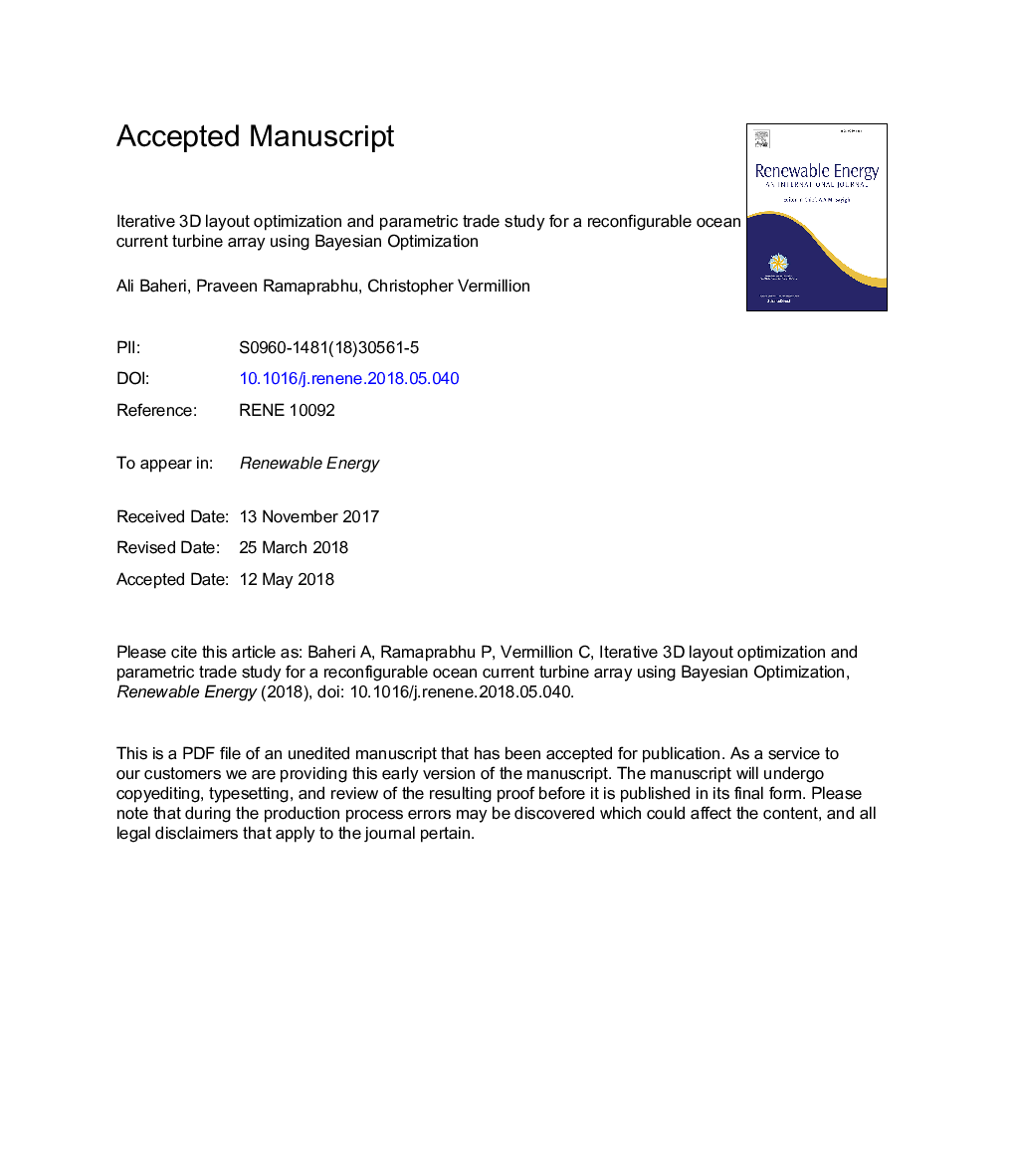| Article ID | Journal | Published Year | Pages | File Type |
|---|---|---|---|---|
| 6764197 | Renewable Energy | 2018 | 24 Pages |
Abstract
In this paper, we present an online approach for optimizing the 3D layout of a reconfigurable ocean current turbine (OCT) array. Unlike towered turbines, most OCT concepts for Gulf Stream energy harvesting involve tethered systems. The replacement of towers with tethers provides the opportunity for OCTs to adjust their locations within some domain by paying out/in tether to adjust depth and manipulating control surfaces (elevators and rudders) to adjust longitudinal and lateral positions. The ability to adjust the OCT positions online provides the capacity to reconfigure the array layout in response to changing flow conditions; however, successful online array layout reconfiguration requires optimization schemes that are not only effective but also enable fast convergence to the optimal configuration. To address the above needs, we present a reconfigurable layout optimization algorithm with two novel features. First, we describe the location of each turbine through a small set of basis parameters; the number of basis parameters does not grow with increasing array size, thereby leading to an optimization that is not only computationally tractable but is also highly scalable. Secondly, we use Bayesian Optimization to optimize these basis parameters. Bayesian Optimization is a very powerful iterative optimization technique that, at every iteration, fuses a best-guess model of a complex function (array power as a function of basis parameters, in our case) with a characterization of the model uncertainty in order to determine the next evaluation point. Using a low-order analytical wake interaction model, we demonstrate the effectiveness of the proposed optimization approach for various array sizes.
Related Topics
Physical Sciences and Engineering
Energy
Renewable Energy, Sustainability and the Environment
Authors
Ali Baheri, Praveen Ramaprabhu, Christopher Vermillion,
